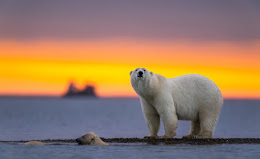Contoh Soal Teks Report
 |
| sumber gambar by pixabay.com |
Eh ketemu lagi. Ok, kali ini kita kupas sedikit mengenai teks report ya. Jadi teks report ini adalah salah satu jenis teks yang dipelajari dalam pelajaran Bahasa Inggris untuk siswa kelas 9. Hampir sama seperti teks deskriptif, teks report juga berfungsi untuk menggambarkan sesuatu; bisa sesuatu yang berhubungan dengan manusia, hewan, benda, fenomena alam dan sebagainya. Bedanya adalah teks deskriptif menjelaskan sesuatu secara khusus dan teks report menjelaskan sesuatu secara umum dan bersifat ilmiah. Jadi dalam teks report akan ada beberapa istilah ilmiah yang muncul. Berikut ini, saya coba sajikan beberapa contoh soal yang berhubungan dengan teks report. Semoga berkah ya.
CONTOH SOAL TEKS REPORT SERTA KUNCI JAWABAN
Choose A, B, C, or D for the best answer!
Read the text and answer questions 1 to 3.
Polar bears are the world's largest land carnivore. They typically prey on seals and consume carcasses, such as those of dead whales. Although most polar bears are born on land, they spend most of their time on the frozen sea. Some polar bears have been seen swimming hundreds of miles from land, though they probably cover most of that distance by floating on sheets of ice.
Polar bears live in one of the planet's coldest environments and depend on a thick coat of insulated fur, which covers a layer of insulating fat. Fur even grows on the bottom of their paws, which protect against cold surfaces and provides a good grip on ice. The bear's stark white coat provide camouflage in snow and ice. However under this fur, polar bears have black skin - to efficiently absorb the sun's warming rays.
2. Polar bears protect themselves from harsh weather with ....
A. their layer of fat
B. their thick fur
C. their white fur
D. their black skin
3. How do Polar bears stand on the floating on sheets of ice?
They use their ....
A. heavy body to keep them balance
B. paw to take hold on the ice
C. thick fur to stay on ice
D. swimming ability to reach a sheet of ice
Read the text and answer questions 4 to 7.
The colors in the aurora were also a source of mystery throughout human history. But science says that different gases in Earth's atmosphere give off different colors when they are excited. Oxygen gives off the green color of the aurora, for example. Nitrogen causes blue or red colors.
The following text is for questions 8 to 11.
A guava tree is not big. It is about 33 feet with spreading branches. The bark is smooth with green or reddish brown color. The plant branches are close to the ground.
Guavas are cultivated in many tropical and sub tropical countries for their edible fruit. The fruit is round or oval depending on the species. It is usually green when unripe, but becomes yellow or maroon when ripe. The flesh of the fruit is sweet or sour. The color of the flesh may be white, pink, yellow, or red, with the seeds in the central part of the flesh. The seeds are numerous but small. In some good varieties, they are edible. Guavas are rich with vitamins A and C, Omega-6, gutty acids and dietary fibers.
The following text is for questions 12 to 15.
When a caterpillar is full sized, it goes into another stage called chrysalis. Caterpillars attach themselves to something solid before becoming a chrysalis. The caterpillar inside the chrysalis change into a butterfly. Some butterflies make the change in one week. Some others take years to change.
When the change is complete, the adult butterfly splits the chrysalis. The insect unfolds its wings and pumps blood and air into them. It spreads out the wings until they become dry and harder. The beautiful butterfly then flies to get nectar from flowers. Most butterflies live only one or two weeks.
This text is for questions 16 to 18.
Ostrich is a large flightless bird native to Africa. It is distinctive in its appearance with a long neck and legs. It has the ability to run at maximum speed of about 70 km/h, the top land speed of any bird. The Ostrich is the largest living species of bird and lays the largest egg of any living bird. The diet of the Ostrich mainly consist of plant, though it also eats insects. It lives in nomadic groups which consist of five to fifty birds. When threatened, the Ostrich will either hide itself by lying flat against the ground, or run away. Moreover, it can attack the enemy with a kick from its powerful legs.
Ostriches become sexually mature when they are 2 to 4 years old. Females mature about six months earlier than males. The mating begins in March or April and ends before September.
 |
| www.pixabay.com |
The plant grow all year round and lose their leaves in autumn. The flowers are 2.5 cm in diameter. They are white or yellow. They (19) ... grow in clusters. Each cluster can consist of at least three flowers (20) ... they also can be solitary. Each flower has about four to nine petals. They are usually very fragrant.
Diolah dari berbagai sumber.
.





Posting Komentar